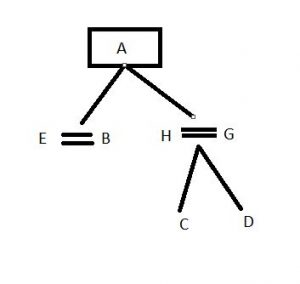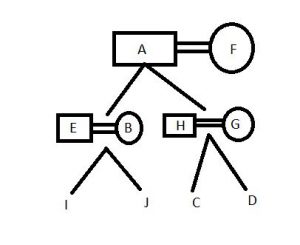Blood relations is one of the most important topics for IBPS PO. Reasoning section of almost all banking exams contains a few questions on blood relations for sure. In this blog, let us see how to tackle blood relation questions for IBPS PO. Aspirants can opt for IBPS PO online preparation to aid them in their journey to crack IBPS PO 2017.
Usually, small sets of two or three questions appear from blood relations as we can see from the previous year papers of IBPS PO. One of the recent developments in this topic is clubbing circular or linear arrangements with it. Aspirants can try IBPS PO online mock tests to get hold of such questions.
Let us start with the basics of how to tackle blood relation questions for IBPS PO.
Contents
Basic terms used in blood relation questions for IBPS PO:
It is essential to be thorough with the terminologies and jargons used. Interpreting the question correctly solves half of it.
We are familiar with words such as the father of, mother of, sister of, brother of, aunt of, uncle of, etc.
Nephew:
If A is the aunt/uncle of B and B is a male, then B is the nephew of A.
Niece:
If A is the aunt/uncle of B and B is a female, then B is the niece of A.
Maternal relations:
The term ‘maternal’ indicates that the relationship is due to ‘Mother’. Eg) Maternal Uncle means mother’s brother.
Paternal relations:
The term ‘paternal’ indicates that the relationship is due to ‘Father’. Eg) Paternal uncle means father’s brother.
Gender agnostic terms:
Certain terms are gender agnostic such as sibling, parent, cousin, etc., One must be careful and should not make any assumptions while dealing with such relations.
Tips on how to represent relations in a flowchart:
While solving blood relation questions for IBPS PO, it is important to represent the given information in visual form to avoid confusion. Choose a way of representation so that you can have unique representation for each gender and relation.
The following convention will be useful in solving questions.
Use a square to represent males and circle to represent females. If a person is married to another, use double lines. For all other relations, use single lines.
Doing so will help you in avoiding confusion. Customise your way of representation and be thorough with what each shape or line represents.
Sample blood relation questions for IBPS PO:
Let us start with simple questions and move on to tougher ones.
Question 1:
A said, “ B is the only daughter of my mother”. How is A related to B?
B is the only daughter of A’s mother. This statement implies that A is a male member and he is a sibling of B. Hence A must be the brother of B.
Question 2:
A is the mother of C. A, B, and D are siblings. B is the only male member of his generation. How is D related to C?
A is the mother of C. A, B, and D are siblings. This implies that D can be either the aunt or uncle of C. As per the question, B is the only male member of his generation. This means that D is a female member.
Hence, D is the aunt of C.
| Take a free Mock for IBPS PO (in the latest pattern) |
Question 3:
A family consisting of 3 generations has ten members – A, B, C, D,
E, F, G, H, I, and J. It has three married couples.
A is the grandfather of D. D and C are siblings. B is married to E. None of the persons in the third generation are married. A has a son and a daughter. G is C’s parent. There are four persons in all but the first generation. H is a married person, and his mother is F. E is an in-law of A. Each of the married couples has two children.
These are the type of questions that we usually encounter in the exam. A is the grandfather of D. B and E are married to each other. G is C’s parent. Since D and C are siblings, they both must be the children of G and H.

H is a male member. F is H’s mother. Hence, F must be the wife of A and G must be the daughter in law of A and F.
Since each of the married couples has 2 children, I and J must be the children of B and E. Since E is an inlaw. This means that B must be the daughter of A and F since they have one son and one daughter ( H is the son).

From the diagram, aspirants can answer any question that follows. Hence, it is important to visualise the information to solve blood relation questions.
To have more idea about the reasoning section in general, try reading the articles on the high-level reasoning for IBPS PO and Must Solve puzzles for IBPS PO.





![How To Manage Time In CAT Exam? [Section-wise Tips] How to manage time in CAT exam ?](https://cracku.in/blog/wp-content/uploads/2018/09/fig-03-09-2018_10-54-46-218x150.jpg)